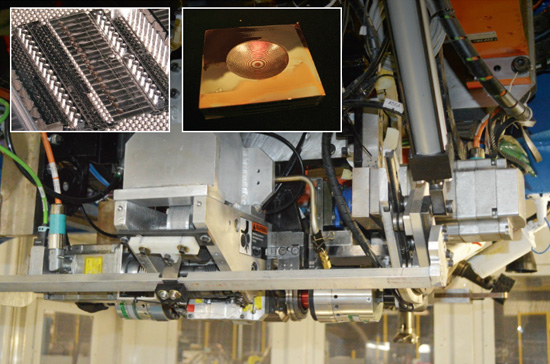Photo Credit: Plant Services/Fabrisonic
Additive manufacturing technologies are evolving at such a rapid pace that it sometimes feels like a full-time job keeping up with new innovations. Recognizing that each 3D printing process has its own strengths, weaknesses and applications, practitioners and researchers alike are inventing alternative methods "to get the job done." Ultrasonic Additive Manufacturing (UAM) is one of the more recent technologies to be adopted. The following is an excerpt from an article in Plant Services that describes UAM in greater detail...
"One of the newest alternatives to conventional metals and thermoplastics printing is the Ultrasonic Additive Manufacturing (UAM) process. Developed by Fabrisonic, this process takes thin metal foils on the order of 6 to 10 thousandths of an inch thick and typically 1 inch wide, and ultrasonically welds those together in a brick-laying pattern to build up a near-net-shape item.
" 'All of our machines are actually 3-axis CNC mills," says Mark Norfolk, President at Fabrisonic, "so we use the additive piece to get near-net shape, and the subtractive piece to get the exact-fit finished tolerance that you need out of the part. We’re welding with ultrasound, which is unique to our process and which happens essentially at room temperature, so we don’t have to worry about a lot of metallurgical interactions.' "
"The solid-state nature of the final printed product is a key advantage of the UAM process, as it bonds dissimilar metals without creating brittle inter-metallics (see Figure 2), and enables the embedding of electronic components including microprocessors, sensors, and telemetry into solid metal parts."
" 'For example, in aluminums, we see peak temperatures in the range of 200 °F, so we’re not changing the metal at all," says Norfolk. "We can also combine dissimilar materials since we’re doing this at so low a temperature. Taking ultrasound and vibrating the metals back and forth and essentially scrubbing off the oxide layer, with a little bit of temperature and a little bit of pressure, we get a solid-state metallurgical bond.' "

